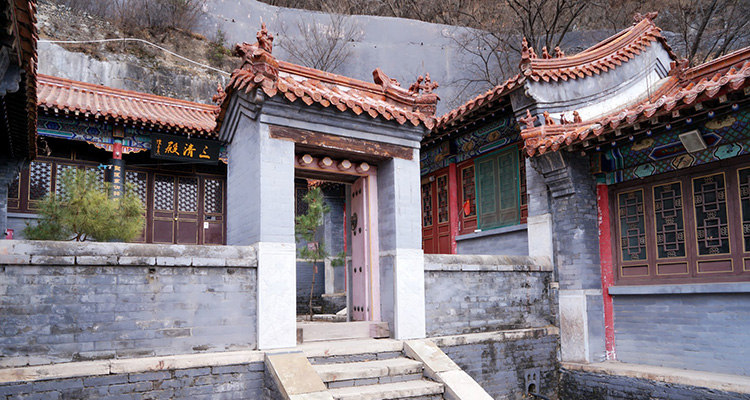Shenglianshan Zhenwu Temple Travel Guide: History, Beliefs & Fun Tips

1. History: A “Time Machine” in Beijing’s Mountains
Shenglianshan Zhenwu Temple, located in Fangshan District of Beijing, was first built in the Ming Dynasty. Over the centuries, it witnessed imperial rituals, local prayers, and multiple renovations. With architectural features from Yuan, Ming, and Qing dynasties, the temple feels like a living museum of ancient Chinese architecture.
2. Religious Significance: Home of the Mighty Zhenwu
The temple is dedicated to Zhenwu Dadi (also known as Xuantian Shangdi), one of the most important Taoist deities who governs the north and the elements of water and fire. In the past, both emperors and commoners came here to pray for good weather and peace. Today, it’s still a spiritual hotspot and a cultural “power station” for blessings.
3. Architecture: Taoist Philosophy in Stone and Wood
The temple features classic Taoist architecture with grey bricks, wooden beams, and mythical beasts perched on rooftops to ward off evil. Built along the mountain slope, it blends harmoniously with Shenglianshan’s dramatic peaks and ancient pines, embodying the Taoist idea of unity between humans and nature.

4. Layout: From Main Hall to Meditation Space
Inside, the Main Hall houses the statue of Zhenwu Dadi, guarded by the turtle and serpent generals. The side halls keep ritual tools and scriptures, while the chanting hall is where Taoist priests practice. Sunlight streams through carved wooden windows, creating a serene and mystical atmosphere perfect for quiet reflection.
5. Art & Murals: Stories on the Walls
Beyond statues, the temple’s walls are decorated with vibrant murals depicting Zhenwu’s journey to immortality. With vivid colors and smooth brushwork, these paintings are not only religious lessons but also windows into folk art of the Ming and Qing eras.
6. Religious Activities: Don’t Miss the Temple Fair
If you visit on the third day of the third lunar month, you’re in luck! That’s Zhenwu Dadi’s birthday, celebrated with ceremonies and lively temple fairs. Visitors can observe quietly or join in by offering incense under the guidance of Taoist priests. Check the schedule in advance to catch the festivities.
7. Etiquette: Dress Right, Hands Off the Statues
When entering the temple, dress modestly—no shorts or tank tops. Do not touch the statues or make loud noises. Respect the rituals, keep the space peaceful, and you’ll have a much better experience.
8. Visiting Route: A Hike with Spiritual Stops
Recommended route: start at the gate, visit the Main Hall and side halls, then follow the mountain trail up to the viewing platform. The full trip takes about 1–2 hours. For a richer experience, combine your temple visit with a hike around Shenglianshan Scenic Area.
9. Opening Hours: Early Birds Skip the Crowds
The temple is open daily from 8:00 AM to 5:00 PM. Hours may be extended during festivals. Holidays can be crowded, so it’s best to arrive early.

10. Services & Transportation: Getting There
The temple offers Chinese-language tours; foreign-language guides require booking in advance. By car, just set your GPS to “Shenglianshan Scenic Area.” By public transport, take a bus from Tianqiao in Beijing to Fangshan, then switch to the scenic area shuttle.
11. Tickets: Bundle Deal for the Whole Scenic Area
Tickets cost around RMB 50 and include access to the entire Shenglianshan Scenic Area. You can buy them on-site or online through travel platforms. E-tickets are accepted for easy entry.


